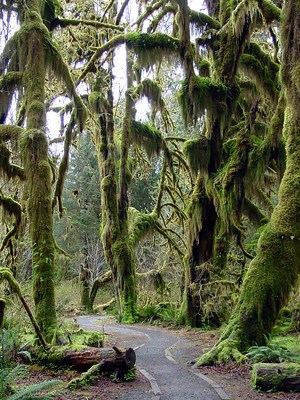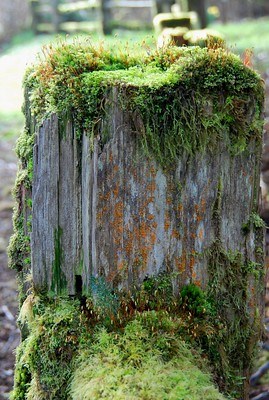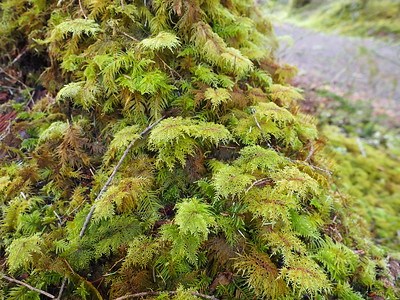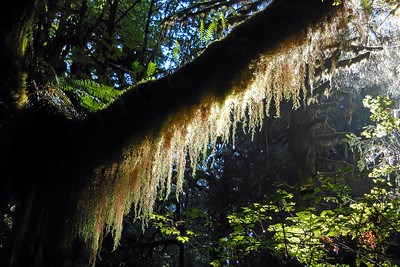
NPS Photo Olympic National Park is well-known for its expansive temperate rainforests. Millions of visitors each year stroll through the greenery of plants to be awestruck by the neck craning views of towering spruce and hemlock trees rising over a hundred feet above. With exciting panoramic views and surprises around each mass of roots, one may overlook some of the truest champions of these moist habitats. Astonishingly this often-overlooked hero can be found all around you from the canopy above to the forest floor down below. Even on a simple, wet and rotting fencepost one may find a mini-forested world all its own. 
NPS Photo A Forest on a FencepostWith hundreds of species, mosses are found in abundance all over Olympic National Park. Varieties like the stair-step moss, cattail moss, spike mosses and club mosses, intertwine to become a diverse, albeit small, forest. Despite resembling other greenery, mosses are quite different from the rest of the forest’s undergrowth. This is because mosses are non-vascular, meaning they lack certain specialized tissues used for transporting water throughout their bodies. Unlike the ferns that also grow throughout the forest floor, mosses do not have true leaves, stems, or roots. Regardless of their primitive structure, the lack of these systems allows mosses to be able to grow just about anywhere throughout these forests. The sheer volume of moss growing in Olympic’s rainforests also provides for other plants. 
NPS Photo A Moist & Mossy LandMosses not only lack true leaves, stems, and roots, but they also lack the protective outer cuticle most other plants have. Without this waxy film, they lose moisture and can dry out very quickly. Fortunately, the rainforests of Olympic are very soggy, receiving an average of 138 inches (3.5 meters) annually. This constant moisture provides ample habitat for not only mosses, but the lichens, lungwort, and liverworts as well. 
NPS Photo Forests Above and BelowAs mosses and lichens grow thick together, they start to resemble a soil, or substrate. As this happens, they can provide not only structure, but also water for other plants to survive and thrive on. When a tree falls in the forest, moss is often the pioneer that takes over the fresh log. As time goes on, seeds fall from above and land in this thick substrate, eventually taking root. The fallen tree has officially become a nursery log for other saplings and ferns to grow upon.
|
Last updated: March 28, 2025
